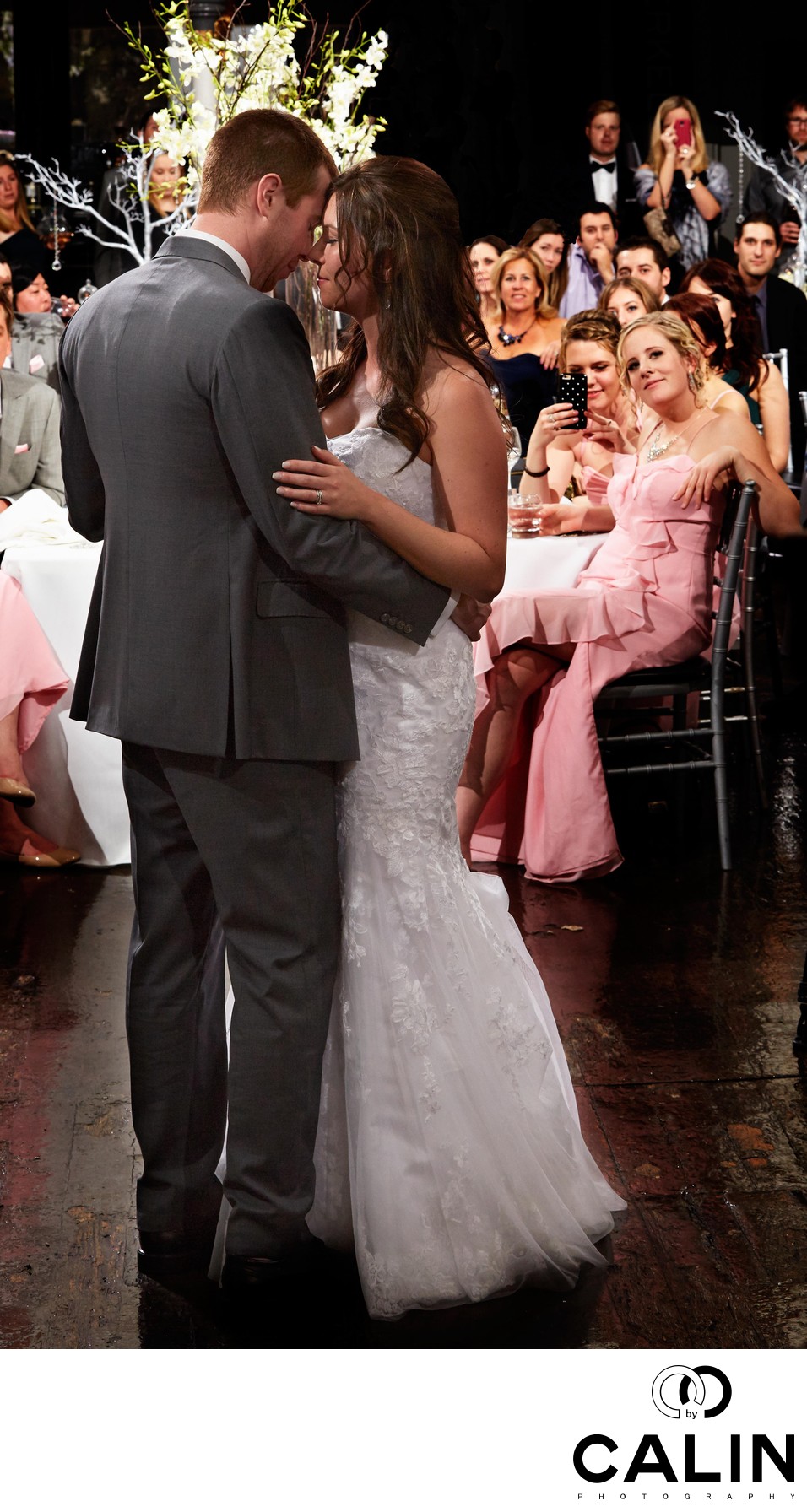
This photo immortalizes the bride and groom having their first dance at their Berkeley Church wedding.
In the foreground, the bride and groom are captured dancing a slow down with their foreheads touching. In the middle ground, we see the bridal party looking at the newlywed couple. They're all smiling and some are filming this first dance with their cell phones. Finally, in the background we have another group of guests who observe the dance from a distance.
What makes this image strong is the fact that the bridal party and all the guests look at the newlyweds dancing. Their gazes created virtual leading lines which guide viewer's eye towards the main subject of this shot: the bride and groom.
I just wish the bride's sister simply enjoyed the moment instead of taking pictures with her iPhone. In this image, part of her face is covered by the phone. Nevertheless, this is a strong wedding picture and the layering gives it dimension.
In terms of composition, this is a balanced photograph with the bride and groom on the left of the frame and the guests on the right, which gives the shot stability. To create depth in this image I use the layering technique whereby there are three layers in this picture. The bride and groom in the foreground, the bridal party in the middle ground and the rest of the guests in the background.
As a Toronto wedding photographer specialized in Berkeley Church weddings, I know how difficult it is to create a good image in this dark wedding venue. Although the former church, now converted into a beautiful wedding venue looks good to the naked eye, it poses significant challenges to a wedding photographer. First, the walls and ceiling are dark, making it impossible to reflect light. As such, to illuminate the church I had to install four strobe lights diffused through 7 feet umbrellas. Having compare myself to the competition, I can definitely see why my lighting scheme is better than my peers. While most Toronto wedding photographers with the use a on camera flash, that is the wrong approach. First, an on camera flash gives a flat look to the pictures. Second, and on camera flash illuminates the main subject but everything else behind it falls into darkness. In contrast, by installing off-camera lights although more time-consuming (it took me one hour to install the strobe lights) it is totally worth it. As you can see in this wedding picture, not only the bride and groom are properly lit, but every single person in the room receives the same amount of light. According to the inverse square law, the farther the light from the subject, the lower the light falloff. In other words, if you want everybody to be uniformly lit, install off-camera lights relatively far from the scene. However, that poses another problem. According to the same inverse square law, when the distance between the light and the subject doubles the intensity of light falls to one quarter. As such, the farther the light is placed, the stronger the light source one needs. For this wedding I used four 640WS Einstein strobe lights placed in each corner of the venue.
In postproduction I applied some basic skin retouching and softening, selective dodging and burning and a vignette. Also, I eliminated one of the guests in the background who was wearing a white shirt, which I found distracting.
Location: 315 Queen St E, Toronto, ON M5A 1S7.